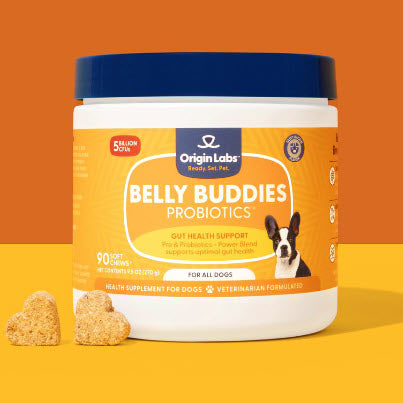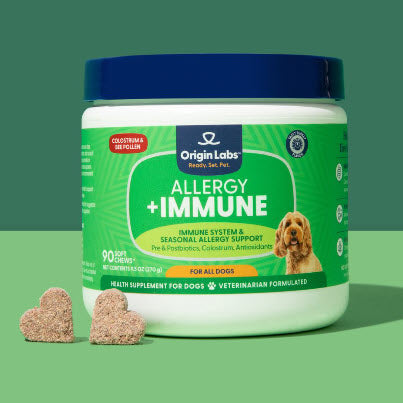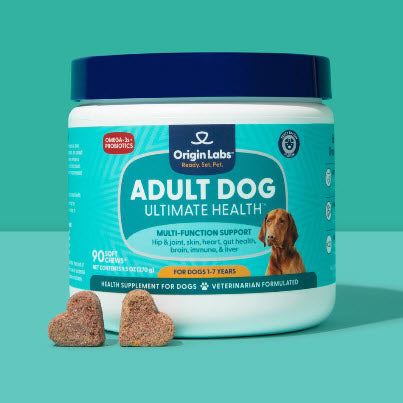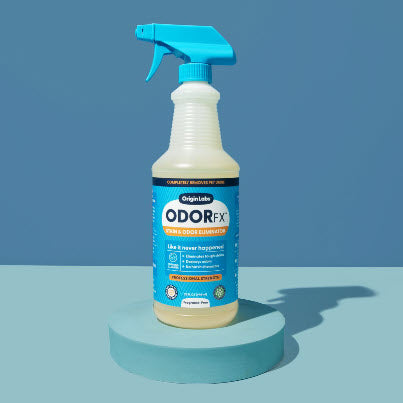Introduction
As a pet owner, it's important to know what foods are safe for your dog to eat, including seafood like shrimp. While shrimp can be a nutritious option for dogs, there are some things you should keep in mind before sharing this tasty treat with your furry friend:
- Risks: Shrimp tails could potentially lead to choking or cause intestinal blockages.
- Benefits: Properly prepared shrimp without the tails can offer vitamins, minerals, and omega-3 fatty acids.
Understanding these potential risks and benefits will help you make an informed decision about whether or not to feed shrimp to your dog.
The Nutritional Value of Shrimp for Dogs
Understanding the Dietary Needs of Dogs
As a responsible pet owner, it's important to understand what your dog needs in their diet to keep them healthy. A balanced diet is key, providing them with the right nutrients like proteins, vitamins, minerals, and omega-3 fatty acids.
The Benefits of Shrimp for Dogs
One food that can offer these nutrients is shrimp. Here's why shrimp can be good for your dog:
1. Protein Powerhouse
Shrimp is rich in protein, which is essential for muscle development and repair in dogs. Proteins are the building blocks of your dog's body, playing a vital role in everything from cells and tissues to enzymes and hormones.
2. Essential Vitamins and Minerals
Shrimp also contains important vitamins and minerals that are beneficial for your dog:
- Vitamin B12: This vitamin is crucial for metabolism and maintaining a healthy nervous system in dogs.
- Niacin (Vitamin B3): Niacin helps with enzyme function and promotes healthy skin and coat.
- Phosphorus: An essential nutrient for strong bones.
3. Omega-3 Fatty Acids
Omega-3 fatty acids are known for their positive effects on cognitive function and joint health in dogs. Shrimp happens to be a source of these beneficial fats, which can:
- Support brain development in puppies
- Improve cognitive function in older dogs
- Help reduce inflammation, particularly helpful for dogs with arthritis
Remember: Shrimp is a Supplement, Not a Meal Replacement
While shrimp can provide some great nutritional benefits for your dog, it shouldn't be the mainstay of their diet. It's important to offer a variety of foods to ensure they get all the nutrients they need for optimal health.
In the next sections, we'll delve into whether it's safe for dogs to eat shrimp tails and how you can safely include shrimp in their meals. We'll also discuss alternative protein sources if shrimp isn't suitable for your dog or they have specific dietary restrictions.
Can Dogs Safely Eat Shrimp Tails?
A common question among pet owners is whether it's safe to give shrimp tails to dogs. The answer is no. Shrimp tails can pose certain risks that you should be aware of before giving shrimp to your furry friend.
1. Choking Hazard for Dogs
The main concern with shrimp tails is that they are hard and sharp, which makes them a potential choking hazard. This is especially true for smaller dog breeds or dogs that tend to gulp down their food without chewing properly.
2. Intestinal Blockage in Dogs
In addition to the risk of choking, shrimp tails can also cause intestinal blockages in dogs. If a dog swallows a shrimp tail and it gets stuck in their digestive system, it can lead to serious health problems. In some cases, emergency surgery may be required to remove the blockage.
Note: Symptoms of an intestinal blockage may include vomiting, loss of appetite, lethargy, or changes in bowel habits such as constipation or diarrhea.
Recommendation: Remove Shrimp Tails
Because of these potential dangers, it's best to always remove the tails before giving shrimp to your dog. Make sure the shrimp is cooked thoroughly and cooled down before serving it to your pet. It's also important to remember that the shrimp should be plain and free from any seasoning or spices that could upset your dog's stomach.
By being cautious about these potential risks, you can include this nutritious seafood in your dog’s diet while keeping them safe and healthy. As we continue our discussion on this topic, we will look at some possible benefits and drawbacks of feeding shrimp to dogs.
Potential Benefits and Drawbacks of Feeding Shrimp to Dogs
When considering the benefits of feeding shrimp to dogs, the nutritional profile of shrimp stands out, particularly its role as a high-quality protein source for dogs. Proteins are fundamental in building and repairing tissues, and they contribute significantly to the overall health and muscle maintenance of canines.
Shrimp also serves as an excellent vitamin and mineral source for dogs. It contains vitamins such as B12, niacin, phosphorus, and antioxidants that support brain health and energy metabolism. These nutrients play a vital role in maintaining:
- Proper nerve function
- Robust immune response
- Healthy bone structure
Additionally, shrimp is rich in omega-3 fatty acids, known for their positive impact on dogs' skin and coat health. Omega-3s can help reduce inflammation and promote a shiny, healthy coat while supporting cardiovascular wellness.
Despite these benefits, it's crucial to adopt a balanced view. Considerations for moderation arise due to potential contaminants like mercury found in some seafood, including shrimp. Mercury can accumulate in a dog's body over time, potentially leading to harmful effects.
Moderation is key—feeding shrimp only as an occasional treat rather than a dietary staple helps minimize the risk of mercury exposure while still allowing your dog to enjoy the nutritional benefits.
Nutritional Advantages:
- High-quality protein aids muscle development
- Vitamins B12 and niacin support metabolic processes
- Phosphorus enhances bone health
- Antioxidants aid immune function
Considerations for Moderation:
- Mercury content in some seafood could pose risks
- Occasional treats rather than regular meals recommended
The omega-3 fatty acids present in shrimp may offer another layer of benefits by improving skin and coat condition. They play an essential role by:
- Enhancing skin barrier function
- Providing anti-inflammatory effects that benefit skin conditions
- Contributing to the luster and sheen of a dog's coat
In summary, while there are clear nutritional advantages to including shrimp in a dog’s diet, it’s important to balance these with awareness of potential contaminants. Offering shrimp judiciously allows dogs to gain the positives without significant risk.
How to Safely Incorporate Shrimp into Your Dog's Meals
When thinking about adding shrimp to your dog's meals, it's important to focus on safety and proper preparation. Let's look at the different ways you can give shrimp to your dog and how to make sure it's safe for them to eat.
Feeding Methods for Giving Shrimp to Dogs
Here are some safe ways to offer shrimp to your dog:
- Cooked Shrimp: This is the best option when introducing shrimp to a dog’s diet. Cooking shrimp thoroughly kills most harmful bacteria.
- As Part of a Recipe: Adding cooked shrimp into homemade dog food recipes can be a fun way to give your pet this seafood treat.
- Shrimp-Based Dog Treats: Some pet stores sell treats made with shrimp that are specifically designed for dogs.
Cooking Techniques
To make cooked shrimp safe for dogs, follow these tips:
- Boiling: Put shrimp in boiling water and cook until they turn opaque and pink. This usually takes 2-3 minutes.
- Steaming: Steaming is another gentle way to cook shrimp that can keep nutrients intact while making sure the shrimp is fully cooked.
- Grilling or Baking: If you choose these methods, make sure you don't serve any charred parts to your dog as they can be harmful.
Avoid frying or sautéing shrimp in butter or oil, as these high-fat cooking methods are not good for dogs.
Risks of Raw Shrimp
Raw shrimp can contain harmful bacteria like Salmonella and Listeria, which can make dogs sick. It's important to remember:
- Don't feed raw or undercooked shrimp to dogs.
- Always cook shrimp thoroughly before giving it to your pet.
Preparing Shrimp for Dogs
When getting shrimp ready for your dog, remember these tips:
- Remove the shell: Always take off the shell, tail, and head of the shrimp as these parts can be a choking hazard or cause blockages in the intestines.
- Clean it: Rinse the shrimp under cold water to get rid of any dirt or contaminants on the surface before cooking.
- Keep it plain: Only give your dog plain, unseasoned shrimp. Seasonings like garlic, onion, salt, and spices can be toxic to dogs.
By following these preparation steps closely, you can make sure that your furry friend enjoys cooked shrimp safely and without any problems.
Other Considerations When Giving Shrimp to Dogs
Pet owners should be aware that some dogs may have shellfish allergies. Allergic reactions to shrimp in dogs can manifest in various ways, including skin irritations, gastrointestinal issues, and respiratory problems. Here's what you should know and watch out for.
Identifying Allergic Reactions
The symptoms of a shrimp allergy in dogs might not be readily apparent. It’s essential to observe your pet closely after feeding them shrimp for the first time. Some common signs that your dog might be allergic to shrimp include:
- Itching or scratching excessively
- Redness or inflammation of the skin
- Vomiting or diarrhea
- Difficulty breathing or wheezing
- Loss of appetite
If your dog exhibits any of these symptoms after consuming shrimp, seek veterinary attention immediately.
Food Safety Measures
When it comes to feeding your dog shrimp, prioritize food safety. As mentioned earlier, ensure that the shrimp is thoroughly cooked and free from any seasoning or additives which could potentially upset your dog's stomach. Remember to always remove the shells and tails as they can pose a choking hazard and risk intestinal blockage.
Also, consider the source of the shrimps you're feeding to your pets. Aim for fresh, organic shrimps whenever possible and avoid the ones from polluted waters as they could contain harmful contaminants.
Responding to Adverse Effects
If your dog experiences any adverse effects from eating shrimp, quick action can prevent further complications. The following steps may help:
- Stop Feeding Shrimp Immediately: If you notice any signs of an allergic reaction or digestive distress, stop giving your dog shrimp right away.
- Contact Your Vet: Get in touch with your vet and describe the symptoms. They can advise on whether emergency care is needed.
- Administer Allergy Medication (if prescribed by vet): Some dogs might need antihistamines or other medications to manage their symptoms. Always consult your vet before giving any medication.
In essence, while shrimp can be a healthy addition to your dog's diet, it's crucial to approach this dietary change with caution. Shellfish allergies in dogs are not uncommon and ensuring overall food safety is vital. As always, personalized advice from your vet is paramount in making informed decisions about your dog's diet.
Alternatives to Shrimp for Dogs with Dietary Restrictions or Preferences
Pet owners looking to vary their dog's diet or address specific dietary concerns have several protein options to choose from. It's important to select nutrient-rich foods that meet your dog's health requirements and personal preferences. Here are some healthy alternatives to shrimp:
1. Fish as a Protein Source
Fish is an excellent source of protein and contains beneficial omega-3 fatty acids. Some fish varieties that are safe for dogs include:
- Salmon: This fish is packed with omega-3s, which promote a healthy coat, skin, and joints.
- Tuna: While high in protein and vitamins, tuna should be given in moderation due to its mercury content.
- Sardines: These tiny fish are loaded with protein and omega-3s. Look for canned sardines in water without added salt.
2. Lean Meats for Canine Diets
Lean meats like chicken, turkey, and beef are also good alternatives to shrimp. They provide essential nutrients without excess fat. Here are some options:
- Chicken: A popular choice, chicken is easily digestible and low in fat.
- Turkey: Another lean meat option, make sure it's cooked thoroughly and free from seasoning or skin.
- Beef: While higher in fat compared to chicken or turkey, beef can still be included in your dog's diet in moderation.
3. Specialty Dog Foods
If you're looking for convenience, there are specialty dog foods available that feature alternative protein sources such as lamb, bison, or venison. These can be beneficial for dogs with specific food sensitivities.
4. Vegetarian Proteins
While dogs are primarily carnivorous animals, they can still derive some nutrients from plant-based proteins. Consider incorporating ingredients like lentils or chickpeas into their meals. Although not as protein-dense as meat or fish, these options offer fiber and other essential nutrients.
Important Reminders:
- Avoid highly processed shrimp products like shrimp chips or crackers as they often contain excessive salts, artificial flavors, or other additives that can be harmful to your dog's health.
- When preparing protein sources for your dog, make sure they are cooked plain without any potentially toxic ingredients such as onion or garlic.
- Introduce new foods gradually into your dog's diet to monitor for any adverse reactions.
- If you're planning to make significant changes to your dog's diet, it's always best to consult with your veterinarian first.
By exploring these alternatives, you can provide your furry friend with a well-rounded diet that meets their nutritional needs while avoiding potential risks associated with shrimp and other shellfish.
In Conclusion
As a pet owner, you may have wondered whether it is safe for dogs to eat shrimp tails. This article has aimed to answer that question and provide a detailed explanation of the topic.
Here are the main points to remember:
- Shrimp is a nutritious food for dogs, containing protein, vitamins, minerals, and omega-3 fatty acids.
- There are potential risks associated with feeding dogs shrimp tails, such as choking or intestinal blockages.
- To prevent any problems, it is best to remove the tails before giving shrimp to your dog.
- It is important to feed shrimp in moderation due to the possibility of contaminants like mercury.
- The safest choice for dogs is plain, unseasoned shrimp without any breading or spices.
Remember, every dog is different when it comes to their dietary needs and what they can tolerate. That's why it's crucial to monitor your pet after introducing any new food into their diet. Watch out for signs of allergies and contact your vet right away if you notice anything unusual.
Seeking advice from a veterinarian is always recommended when it comes to your dog's diet and specific food questions. They can provide personalized guidance based on factors such as your dog's age, breed, size, and overall health condition. Plus, they can advise you on the right portion sizes and how often to feed shrimp to your furry friend.
Understanding canine nutrition can be overwhelming at times, but with careful consideration and professional support, you can ensure that your beloved companion stays healthy and happy with a well-balanced diet.
FAQs (Frequently Asked Questions)
Can dogs eat shrimp tails?
It is not recommended to feed shrimp tails to dogs due to the potential risks of choking or intestinal blockages. Always remove the tails before offering shrimp to your dog.
What are the potential benefits of feeding shrimp to dogs?
Shrimp can be a beneficial protein source for dogs, as well as a provider of essential vitamins and minerals. The omega-3 fatty acids in shrimp also contribute to skin and coat health for dogs.
How can I safely incorporate shrimp into my dog's meals?
When offering shrimp to your dog, ensure it is cooked and plain, without any breading or spices. This will help prevent harmful bacteria and ensure safe consumption for your dog.
Are there alternatives to feeding shrimp to dogs with dietary restrictions or preferences?
For dogs with dietary restrictions or seafood allergies, alternative protein sources such as fish or lean meats can be beneficial. It is important to avoid highly processed shrimp products like shrimp chips or crackers for dogs.
What should I do if my dog experiences an allergic reaction to shrimp?
If your dog experiences an allergic reaction to shrimp, it's important to seek veterinary attention immediately. Be aware of symptoms of shrimp allergy in dogs and take necessary steps for emergency care.
Should I consult with a veterinarian regarding my dog's diet and specific food inquiries?
Yes, it is encouraged to consult with a veterinarian for personalized advice regarding your dog's diet, including any specific questions about feeding shrimp or other human foods to your dog.








